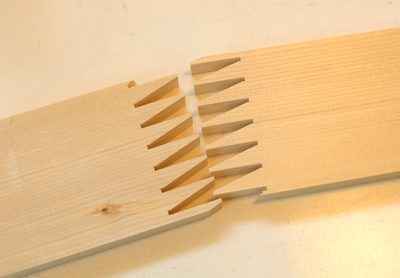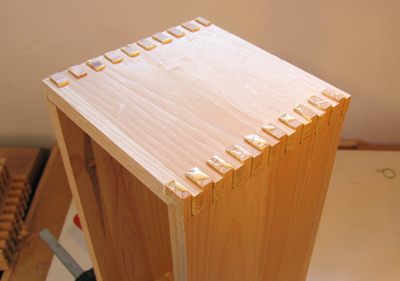To a large extent this is somewhat funny, if not pathetic. Yet somehow interesting.
here is a short list of established, well credentialed sources who make no distinction between box and finger joint.
Simply put, the two terms are quite often interchangeable.
WoodWorkers Guild of America;
Woodworking Joints: Which One Should You Use
Gary Rogowski: The Complete Illustrated Guide to Joinery (A standard in joinery literature);
The Complete Illustrated Guide to Joinery by Gary Rogowski - Complete Illustrated Guide Series - Woodworking - Techniques - Hardcover Book - Taunton Store
Wikipedia:
https://en.wikipedia.org/wiki/Woodworking_joints
ShopSmith:
Incra I-Box? Comparison To Convention Box Joint Method
LeeValley:
Incra® I-Box Finger Joint Jig - Lee Valley Tools
Leigh joinery jigs:
https://www.leighjigs.com/super_fingers.php
FineWoodworking:
Multi-Purpose Tablesaw Jig - Fine Woodworking Interactive
Now, I have no names to drop and I certainly don't pretend to have any industry contacts to reference, but
what I do got is common sense. And that is what the members need to use. Just a lil common sense. This
clearly if not definitively illustrates that a common joint may be referred to by various names. The names may
be local, regional or even national, this does not mean they are universal and absolute. A tapered finger joint
is completely different than a finger/box joint. Application is completely different. Yet the names of the joints
are confusingly similar.
I have always just considered a box joint a box joint and a finger joint a finger joint until this marvelous display of
editorial buffoonery. The fact is that the two can be and in many circles are just one in the same. Just because
terms and definitions were laid out in a long lost glossary don't mean they were/are correct. All it means is that the
author of the definitions believed it to be a certain way or to have fit within certain criteria. Inquires like answers are not always
black and white, one person and/or source should not be expected to be the definitive source of all things wood working.
As is said quite often in here, there is more than one way to skin a cat, and at least a couple dozen ways telling you how to do it.















